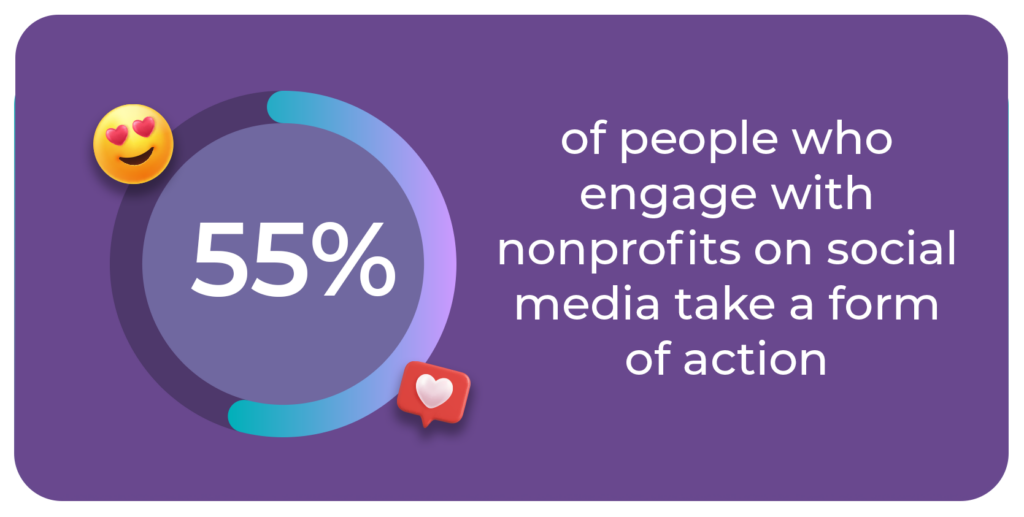Sep 20, 2023
How to Implement and Use a Donor Management Platform: The Donor Journey

Learn more about the donor journey and how you can keep track of each stage of your donor relationship.
What is the donor journey?
The donor journey refers to looking at each stage of a donor’s interest in your nonprofit organization. The path details how a donor goes from a stranger to a consistent donor for your organization. Understanding each facet of this journey will help you understand why individuals and other organizations donate to your nonprofit. You’ll also learn why your donors continue to support your mission.
Understanding the donor journey also allows you to identify any potential weak links in your donor journey, allowing you to improve your donor conversion and retention rates.
1. Awareness
The first step of the donor journey is the awareness stage. As the name suggests, the awareness stage refers to the familiarity individuals and other organizations have with your nonprofit. Nonprofits with more awareness are likely to have many donors since individuals can easily find these organizations.
You can use various tools to get the word out about your nonprofit to gain more attention and, therefore, more donors. Advertising and marketing can help get the word out about your organization, especially social media marketing. You can showcase your events or bring attention to your cause using paid social media posts or influencers to get your message out.
You can call individuals or send mailers to make people aware that your organization exists. You can also attend or host trade shows and other events.
Another way of getting the word out about your nonprofit is to optimize your website and other online content so it shows up first in search engine results. When someone searches for an organization with a cause similar to yours, showing up sooner in their search results can increase your number of donors. You can optimize your website by creating unique content that individuals would use keywords to search for. Consistently posting to social media can also do the same by boosting your leads.

2. Consideration
Once donors are aware of your nonprofit, the next stage is consideration. When people find your organization, they should be able to identify your mission, values, and goals. They will want to ensure that your values and goals align with their own. You want individuals to consider donating to your nonprofit organization, so you must form an emotional connection with them and find ways to help them engage with your mission.
3. Decision-making
Once donors have collected all the information about your nonprofit organization, they should be ready to decide whether to donate to your cause. You should make the donation process as easy as possible, so your donors don’t become deterred from donating. A complicated donation process can turn them away to find a similar organization with a simplified process.
Keep donation buttons simple and easy to find on your website. The top of your website is a good choice since many people naturally look for information around the header. Include donation buttons in other locations on your website, such as at the end of articles or on your About page.
4. Evangelizing
Now that you have an established relationship with your donor, you’ll want to continue to build on your connection. Your donors can spread the word about your organization and help you create new relationships with potential donors. They can share your social media posts, help you promote an event, or encourage people they know to join them in supporting your cause.
Creating a donor journey map
Nonprofits can create their own donor journey map to navigate the relationship between their donor and the organization. Donor journey mapping helps you outline, design, and chart the specifics of a donor’s relationship with your organization, including their activities, engagement, and interactions.
The donor journey map can be simple or complex, depending on your goals for donors. There are two main types of donor journey maps you can create:
Simple lists
A simple list is one of the most straightforward donor journey maps you can create for your organization. The simple list creates a step-by-step map of your plan, listing each donor’s action and the following steps.
For example, if an individual donates to an organization, the simple list will outline the steps you take next. These steps could include confirming the donation, mailing a thank you note, and adding the individual to a mailing list for your organization’s newsletter. The simple list can be as short or as long as you’d like but can only be linear. While the simple list is a basic donor journey map to create, it’s challenging to account for complex events.
Decision trees
Decision trees are more complex donor journey maps that account for complicated trigger events and various outcomes. These maps will list each event and the different possibilities after interaction with the donor.
For example, a donor can subscribe to your mailing list for your organization’s newsletter. If the donor decides not to subscribe, include an outcome that alters the donor journey based on this decision. Instead of subscribing to your newsletter, they can continue to engage with your organization in other ways. Because decision trees are more complex than simple lists, they can account for various donor decisions more accurately.
Using a donor journey map can help nonprofit organizations identify problem areas in their donation process. For example, you may have trouble retaining donors. You can use the donor journey map to determine why this may be happening and what you can do to encourage future engagement.
Donor management software helps your team gain a deeper understanding of your individual donors. GiveSmart’s Donor CRM can save you time and help improve your relationships with your new and existing donors, no matter where they are in the donor journey. Talk to a GiveSmart expert today.
Related



